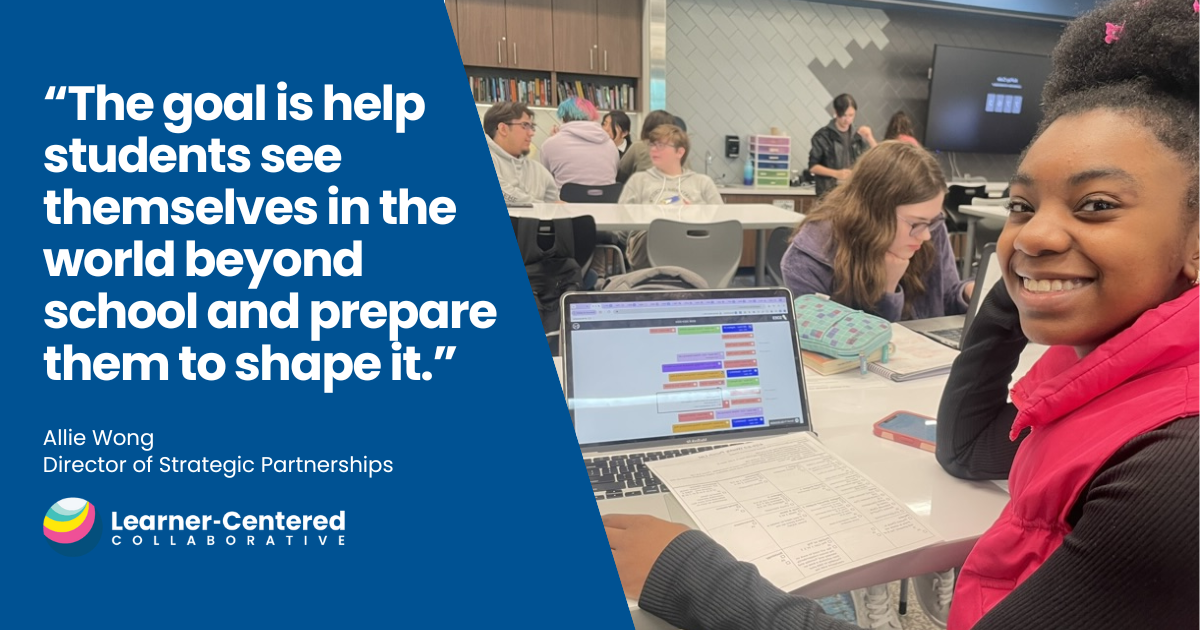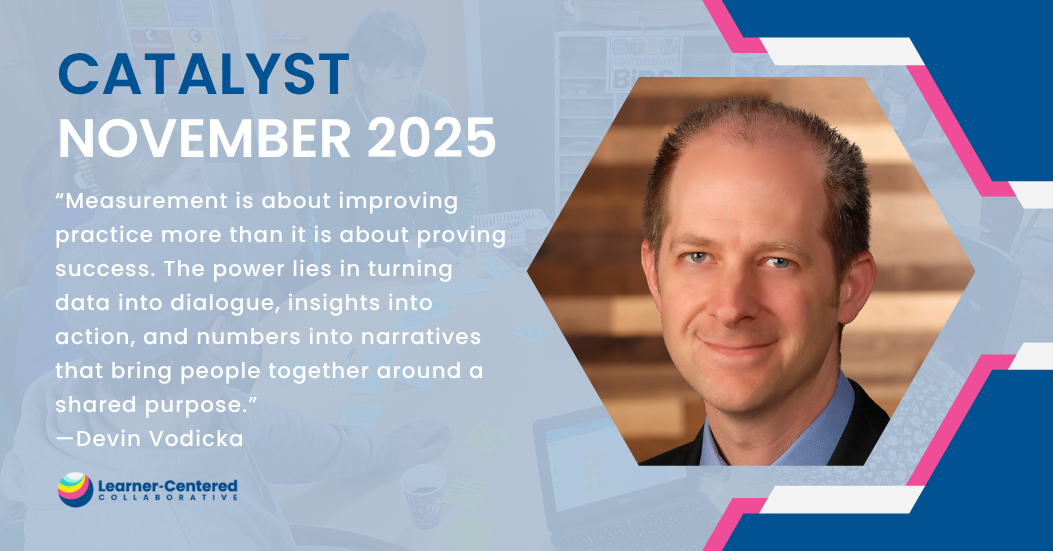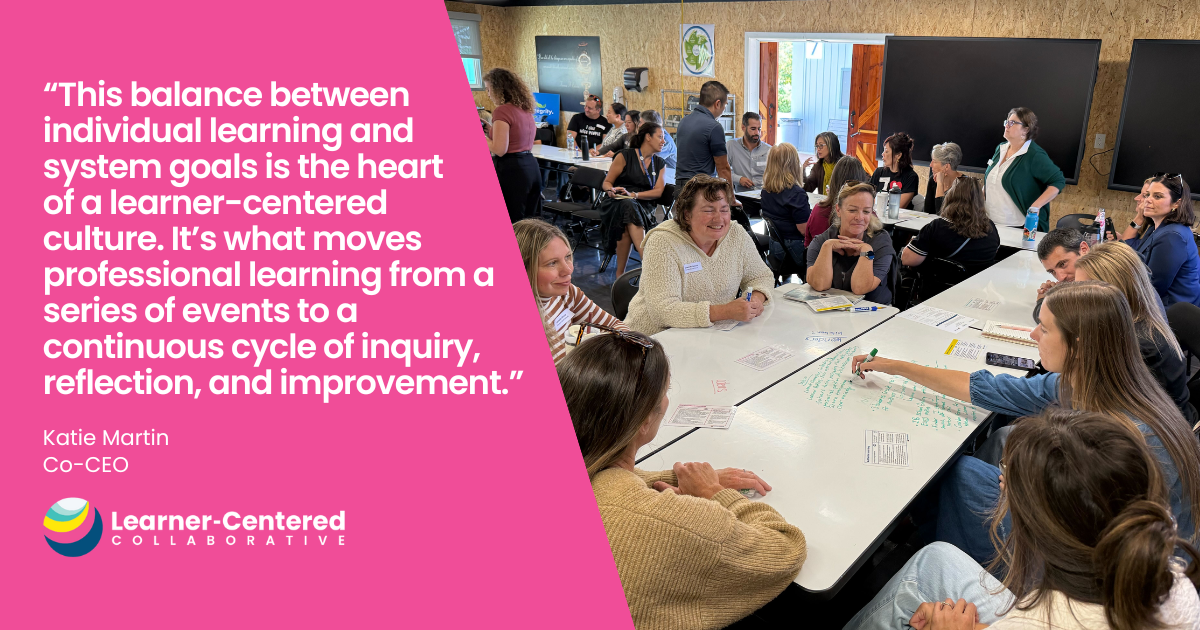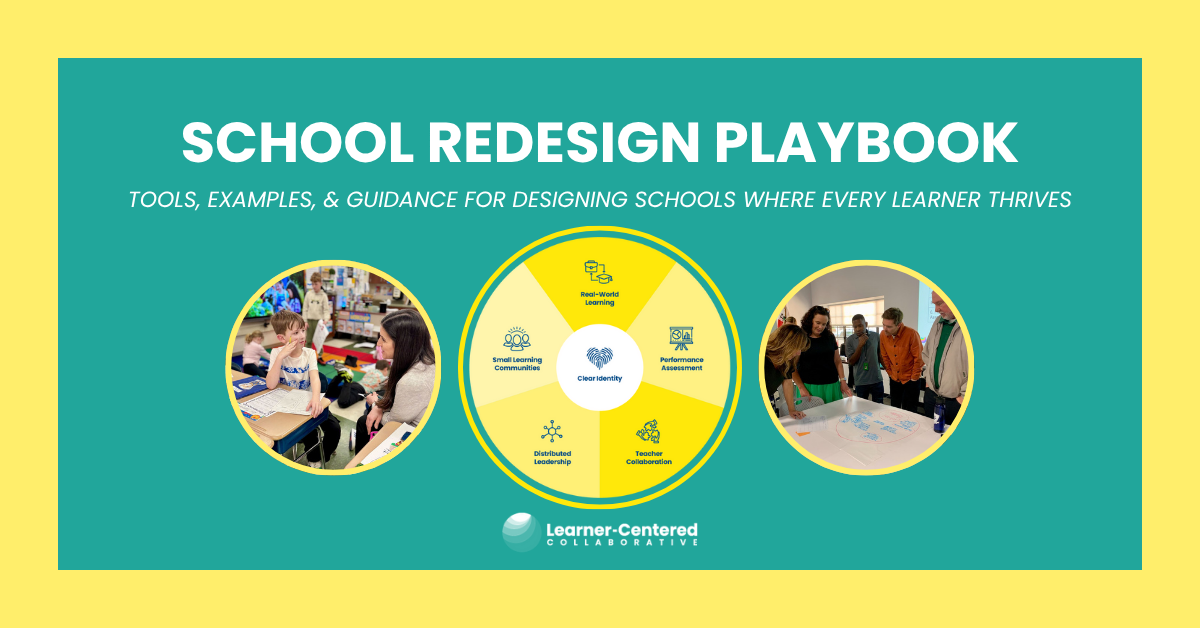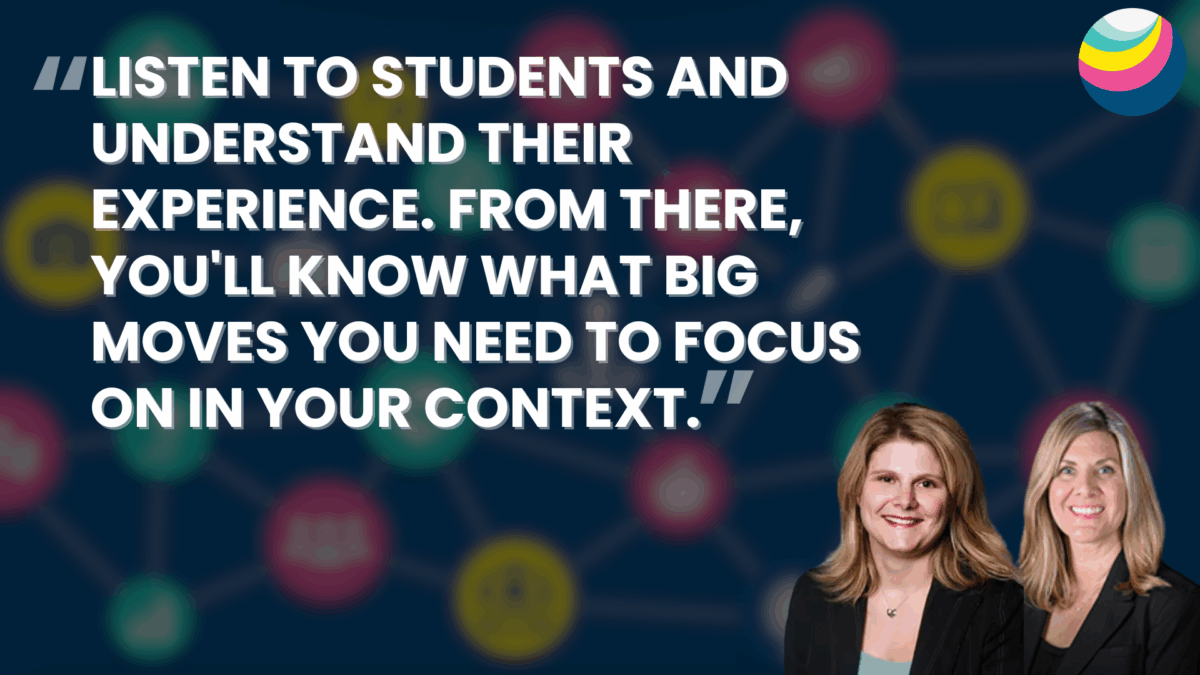Master Schedule Redesign
Overview
School-centered schedules often focus on compliance and efficiency over learning. Students move through the instructional day, most often dictated by bells, learning content in isolation. In a learner-centered system, time is prioritized to ensure that a school day provides opportunities for learners to engage deeply in meaningful work that supports their progress toward academic and whole learner outcomes. This requires an evaluation of the existing schedule and shifting away from short class periods or learning blocks that teach content in silos.
Schedules communicate what priorities exist in a school and in order to support shifts to learner-centered education, a school schedule can ensure that structures are in place to make learner-centered learning experiences the norm for the system. At Learner-Centered Collaborative, we’ve identified 6 key structures that enable learner-centered practices, based on visits to over 100 diverse schools. A school schedule can explicitly make time for small learning communities by having an advisory period or dedicating time for morning meetings or whole grade level meetings. Real-world learning in a schedule can look like full days dedicated to learning out in the community, a 2 hour interdisciplinary project block in the afternoon or intentionally building interdisciplinary projects and experiences into regularly scheduled content blocks. Schedules can also account for performance assessment of whole-learner outcomes by thinking about when in the week students can reflect as well as when throughout the year they may build a portfolio or share it with families through student-led conferences. Finally, time in the schedule must be dedicated to teacher collaboration and distributed leadership.
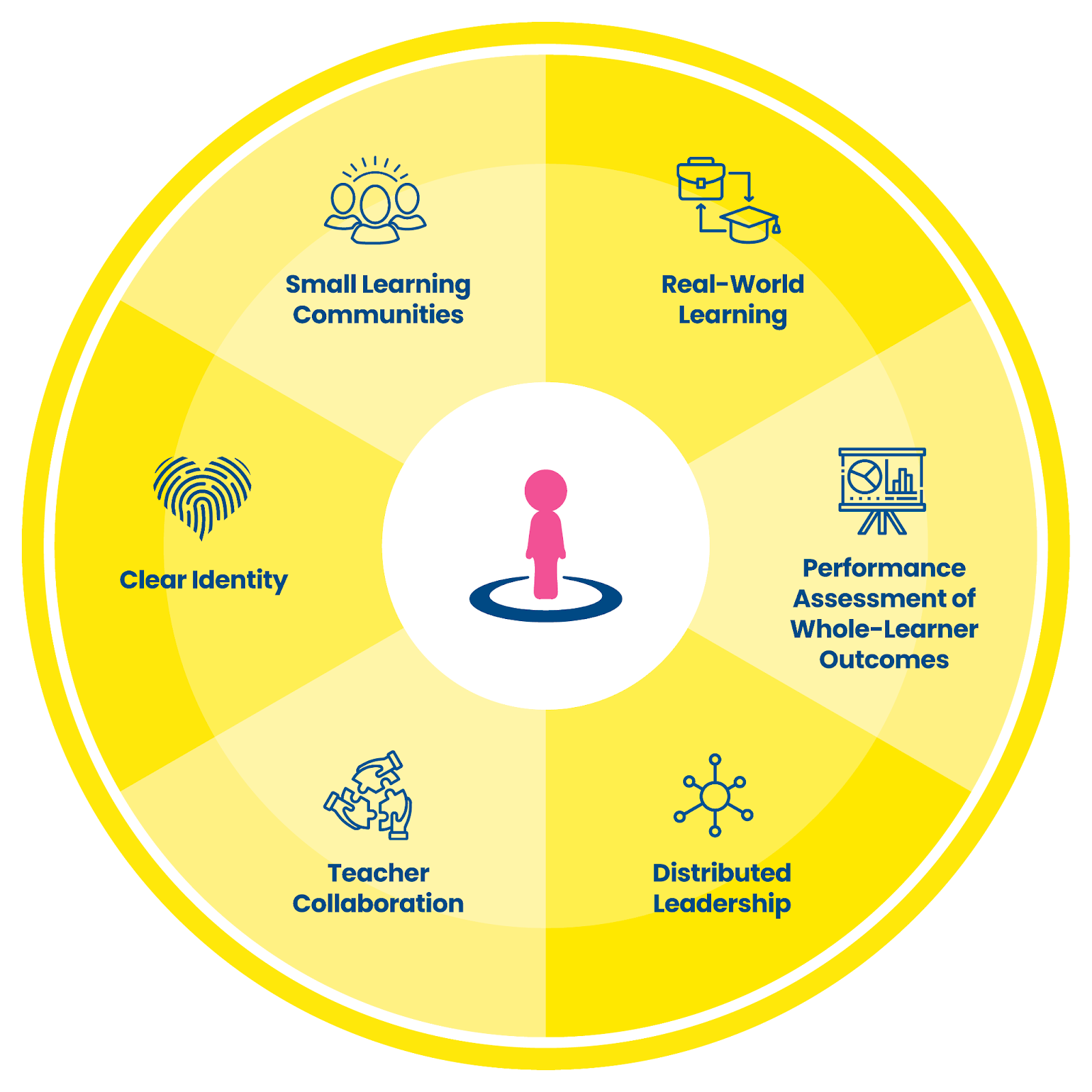
Bright Spots
Student-Created Schedules
A visit to the microschools within Liberty Public Schools highlighted the impact of intentionally designed learning environments. Students began their day by convening for a morning meeting, collaboratively setting their weekly schedules based on individual needs. Across the various models observed, multiage groups were a common feature, with teachers working together to support learners through a combination of whole-group, small-group, and one-on-one instruction tailored to specific goals.
At Edge, a distinctive weekly ritual unfolded as students planned their schedules for the week. Teachers played a vital role in this process, offering guidance, support, and coaching before students embarked on diverse learning experiences designed to foster autonomy and engagement.
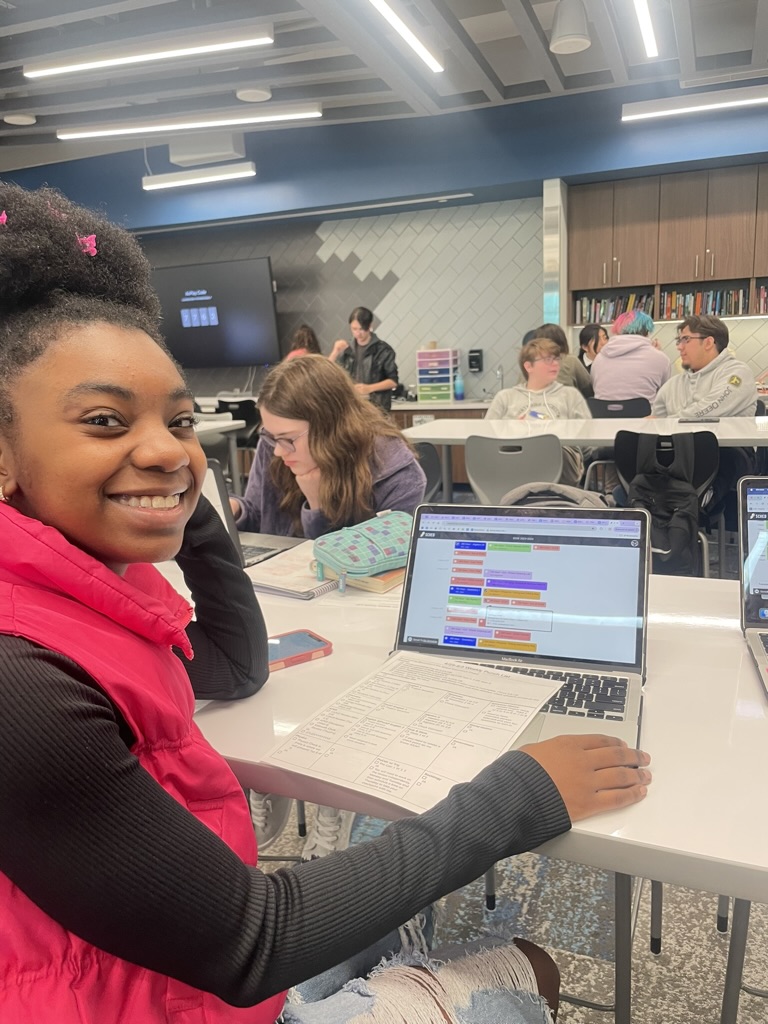

Embark Education in northwest Denver is a middle school embedded in a coffee shop. Each week students set their schedule using Google Calendar, much like adults. Educators outline key whole group activities at the beginning of each week and invite learners to attend those sessions as meeting invites. Educators formally schedule less than 50% of learner time each week. The remaining 50% learners schedule for themselves based on weekly expectations (e.g. 2, 30-minute blocks of silent reading) and the needs of their current learning experiences and goals. This requires coordination among educators for similarly cohorted students and open blocks of independent learning time. You can read more about this process here.
You can see more examples of student created schedules from One Stone, a high school in Idaho.
Modified Block Schedule
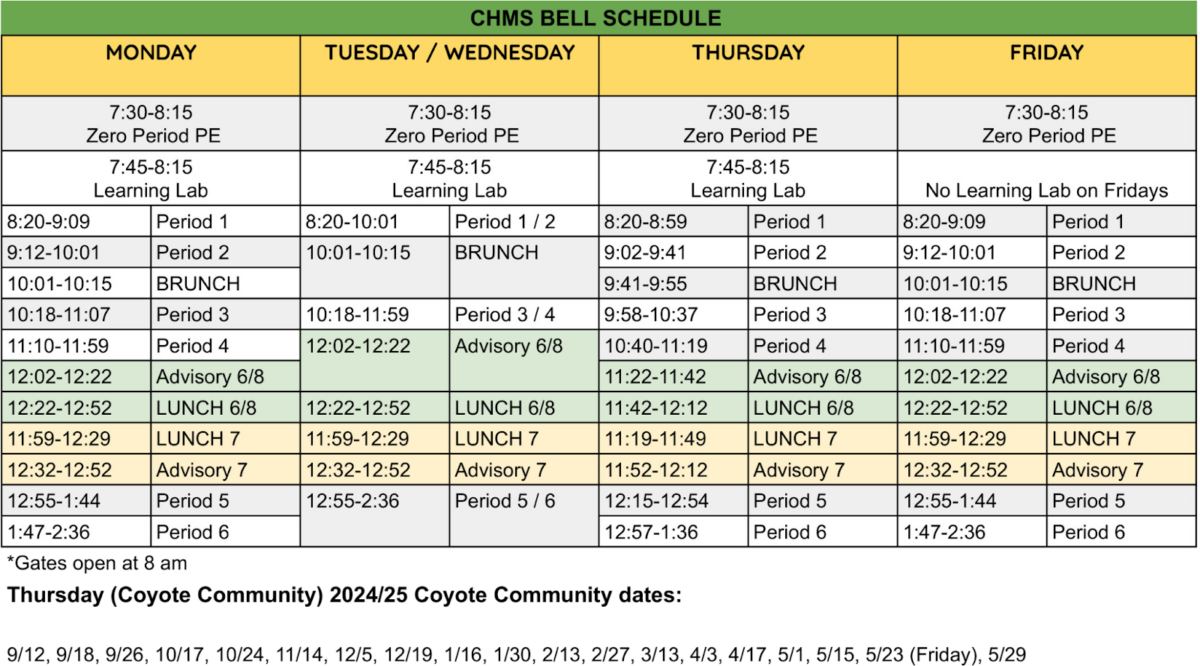
Calavera Hills Middle School in San Diego, CA., leverages a modified block schedule to support learners with mastering core content outcomes and provide opportunities to integrate and extend learning. An Advisory period daily supports students to have a “homebase” both with a caring adult and a group of peers. They also host a bimonthly all-school assembly to build community, celebrate, and have fun.
Time for Interdisciplinary Learning
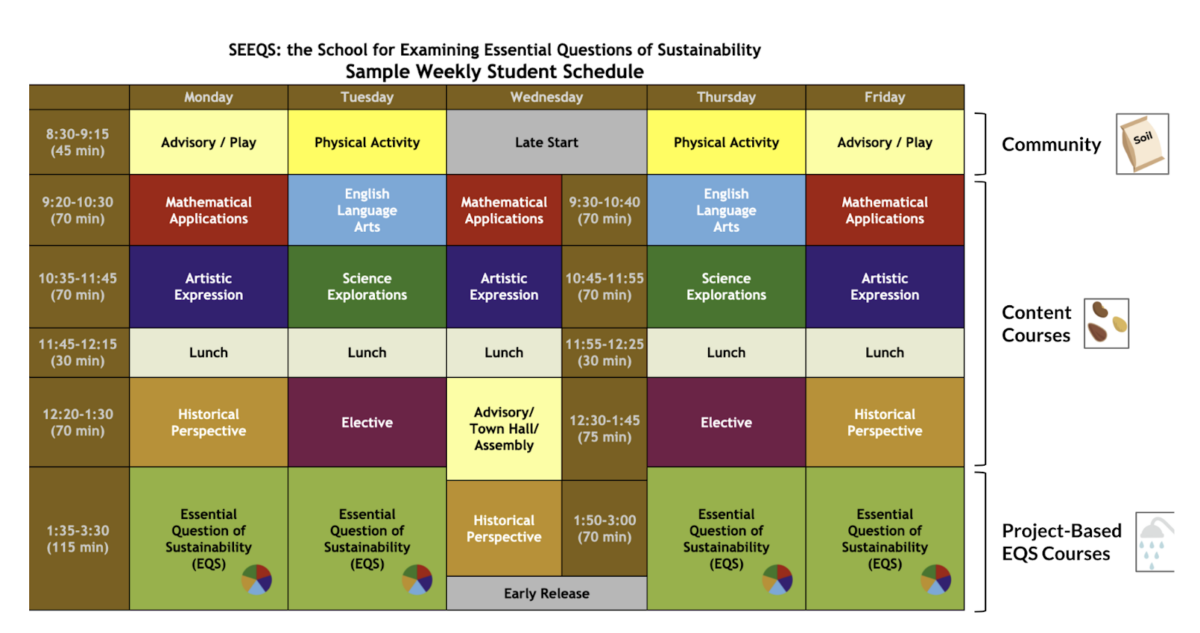
Source: SEEQS
SEEQS is an innovative public charter school in Honolulu, Hawaiʻi serving students in grades 6-8 with a focus on examining essential questions of sustainability. To do this, powerful core learning in math, science, social studies, English, and the arts combines with project-based experiences that allow students to apply what they have learned to real-world situations. Their schedule allows for long blocks of time to engage in authentic work, opportunities for community involvement, and for students and teachers to work and play together.
4 Day Instructional Weeks for Teachers

California Area School District was struggling to attract teaching candidates and to compete with salaries of neighboring school districts. They decided to offer a four day work week for teaching staff, with the fifth day consisting of all of their contractual prep time. They increased the four day work week time to 8 hours with no prep and gave them all their prep on the 5th day. However, they created a rotating schedule (A-E days) in which every teacher’s 5th day is different, making it so students still attend school 5 days a week. Specialists rotate through to support classes whose teachers are on a prep day. Teachers do not have to report to the building on their prep days. This flexibility has had a great impact on teaching and learning. Student instructional time went up and teacher attendance went from 86% to 99%.
Schedules to Allow for Multi-Age Cohorts
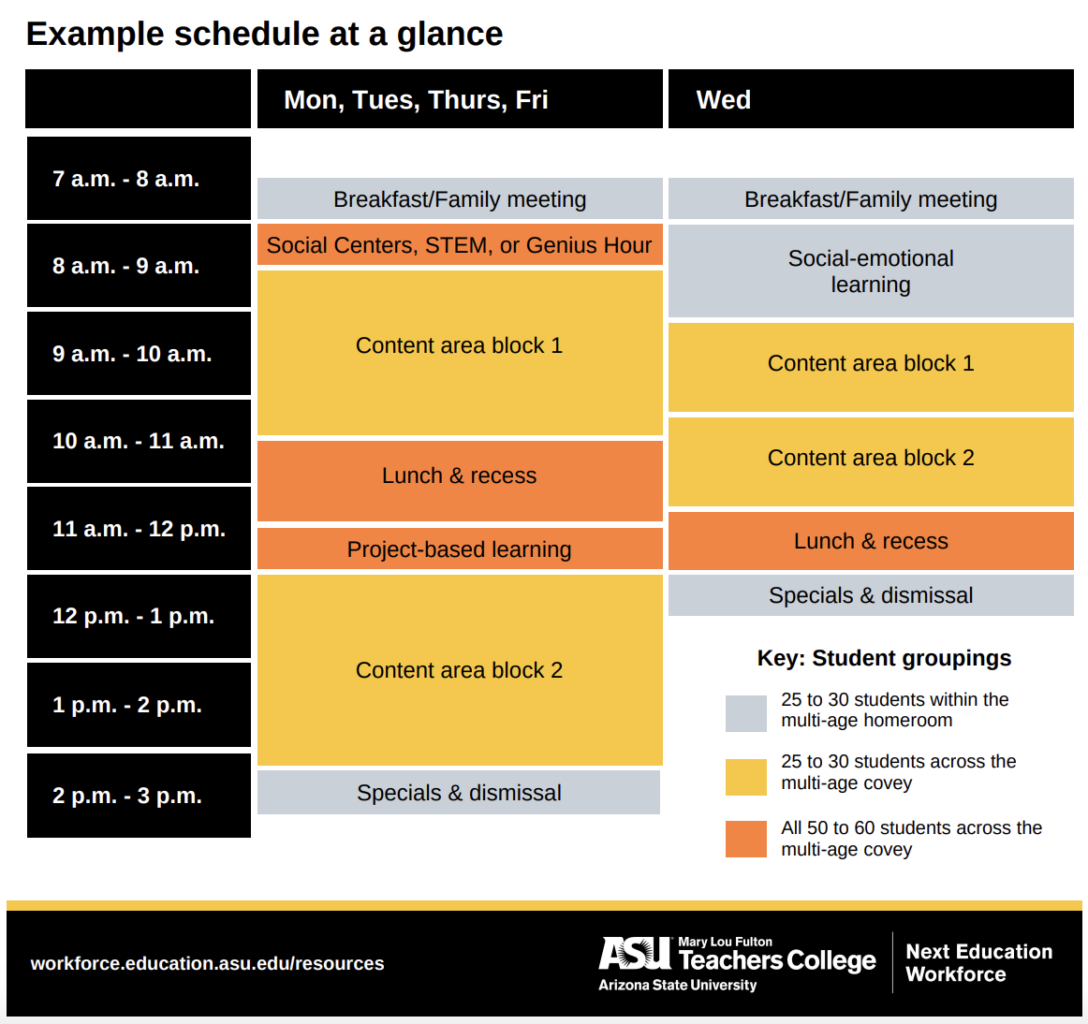
Source: ASU Next Education Workforce
The Creighton Academy is a K-6 school where students are grouped in multi-age cohorts of 55-60 students that have their own set of core teachers. Their schedule is organized to support moments where the entire cohort is together with all educators and other moments where the cohort is split among educators for more focused learning experiences. There is also built in time for social emotional learning and community building. You can read more about their model here.
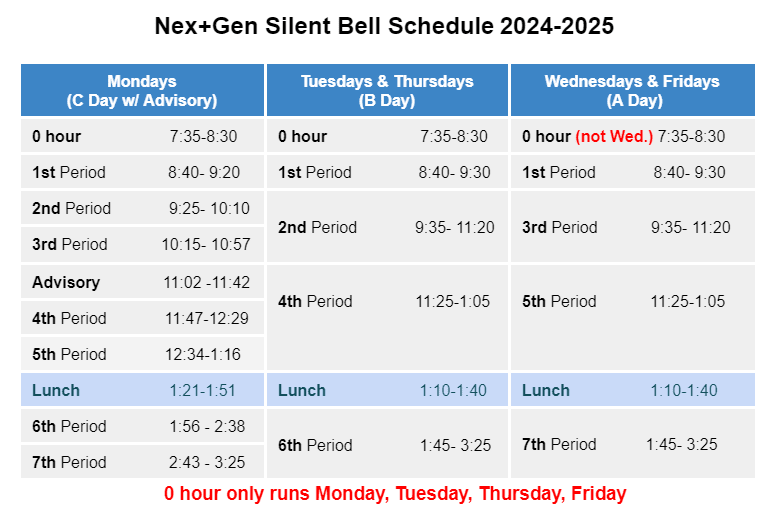
Source: Nex+Gen Academy
Nex+Gen is a public high school in Albuquerque, NM which uses a modified block schedule that allows for courses that are interdisciplinary and co-taught. In this schedule, first period is the shortest each day and is when most electives are offered. Interdisciplinary courses, such as World Studies (English 10 and World History), Integrated Biology (Biology and PE), and Concentric Democracy (English 9 & Geography/New Mexico History) are taught during the other periods, typically meeting daily. For example, Integrated Biology is taught during 4th and 5th periods so the larger class meets daily for long blocks of time. This allows for flexibility in the schedule so sometimes longer labs can be done or the teachers could choose to split the class so half are focusing on PE and half are focusing on science content. This schedule also means that teachers have shared planning. For example, the humanities classes have a common open period and meet weekly for planning. This schedule also supports students to enroll in dual credit and mentorship opportunities. Junior and Seniors finish their course work before lunch and are released to go to their off campus internships or university courses.
- How might you use your learner-centered mission, vision, values and learning model to ground your purpose and intention for rethinking your use of time?
- What are you prioritizing in your current schedule? What is not being prioritized or is not happening in your current schedule? How might your learner-centered priorities help you shift what to spend time on?
- How might the school day be designed for learners to have choice and maximize time to meet learning goals?
- Who do you need to engage (which stakeholders) to begin these conversations? What is your timeline?
- How might you reconsider other structures to create greater flexibility with time? How might you think about cohorting students and educators to support your new scheduling?
